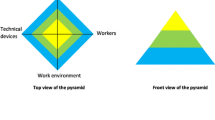Abstract
This paper explores the use of the Human-System process (HS) model in managing the human-related risk in complex systems. The HS model is a proposed ISO Publicly Available Specification (PAS) [ISO PAS tba:2002] A specification for the process assessment of human-system issues. It presents a view of the system life cycle with an emphasis on the identification and handling of issues related to people (users and other stakeholders). The model is focused on system acquisition and operation but includes processes related to Human Resources (e.g. selection and training). It is intended for use in process assessment and improvement, but could also support planning and the assessment of competence. A process assessment approach to IEC 61508 [IEC 61508:1998] has been proposed for software-related processes [Benediktsson et al 2001], and is recommended here as a validated means of assessing organisational capability to deliver systems in a user-centred manner. The relationship between the processes in the HS model and those required by Health and Safety is discussed. The HS model is also proposed as a means of addressing compliance with Regulations across sectors in a consistent way.
Access this chapter
Tax calculation will be finalised at checkout
Purchases are for personal use only
Preview
Unable to display preview. Download preview PDF.
Similar content being viewed by others
References
Benediktsson O, Hunter R B, Systems in Software Process: Improvement and Practice, 6 (1): 47–62, John Wiley and Sons Ltd., 2001
Blackmore G A: Safety Management Systems in Offshore Oil and Gas Companies - Experience from Asessment and Audit of UK North Sea Operations, New Orleans, December 1996
BS EN 614–1: Safety of machinery - Ergonomic design principles. Part 1. Terminology and general principles 1995
Busby J, Strutt JE, Sharp J I: “Lessons learnt from Offshore & Marine Incidents & accidents - input to the Design Process”, ERA Conference on Major Hazards Offshore, London, November 2000
Earthy J V: Usability Maturity Model: Human-Centredness Scale. 1E2016 INUSE Deliverable D5.1.4s, 1998. http://www.lboro.ac.uk/eusc
Earthy J V: A new approach to marine programmable systems assessment, 9th Intel. Symp. of the Intnl. Council On Systems Engineering (1NCOSE), Brighton, UK, 1999
Messer A.C: Draft Survey Procedures,Assessment scheme realisation, ATOMOS IV ref A408.02.08.055.001, 2000 http://www.atomos.org/atomos2/
Ibrahim L, Deloney R, Gantzer D, LaBruyere L, Laws B. Malpass P, Marciniak J, Reed N, Ridgway R, Scott A, Sheard S: The Federal Aviation Administration Integrated Capability Maturity Model, (FAAiCMM), Version 1.0, 1997 http://www.faa.gov/aio/ProcessEngr/iCMM/
FAA Human Factors Job Aid, Federal Aviation Administration Office of the Chief Scientific and Technical Advisor for Human Factors, AAR-100, (202)267–7125, 1999 http://www.hf.faa.gov
Successful Health and Safety Management. HSE Books, 1991
Reducing error and influencing behaviour. HSE Books, 1999
IEC 61508: Functional safety of electrical/electronic/programmable electronic safety-related systems, 1998
ISO/CD 17894: Ships and marine technology ¨C Computer applications - General principles for the development and use of programmable electronic systems in marine applications, 2001
ISO 6385: Ergonomic principles of the design of work systems,1981
ISO 9126: Software product quality - quality model, 2000
ISO 12207: Software process - Software lifecycle processes,1995
ISO 13407: Human-centred design processes for interactive systems, 1999
ISO CD 15288: System engineering - System life cycle processes.
ISO TR 15504: Software process assessment - A reference model for processes and process capability, 1998
Ergonomics of human system interaction - Human-centred lifecycle process descriptions, 2000
ISO PAS tba:2002 A specification for the process assessment of human-system issues, 2002 in press
Jones R L, Hamilton J M: A co-ordinated approach to identifying software development risks in MOD projects, Proc. European SEPG conference, 1997
Palmer MT, Rogers W H, Press H N, Latorella K A, Abbott T S: A Crew-Centered Flight Deck Design Philosophy for High-Speed Civil Transport (HSCT) Aircraft, NASA Langley Research Center, NASA Technical Memorandum 109171, 1995
Capability Maturity Model for Software, Version 1.1 CMU/SEI-93-TR-24 Software Engineering Institute, Carnegie Mellon University, Pittsburgh,1993
Reason J T: Human Error, Cambridge University Press, 1990
Turner B A: Man-Made Disasters. Second edition: Turner B A,Pidgeon N K: Butterworth- Heinemann, 1997
Vaughan D: The Challenger Launch Decision. Risky Technology, Culture and Deviance at NASA. The University of Chicago Press, 1996
Westrum R: Social Factors in Safety-critical Systems. In Redmill F, Rajan J: Human Factors in Safety-critical Systems, Butterworth-Heinemann, 1997 Part of the authors’ work was carried out under projects for the European Commission and the UK. Ministry of Defence. The support of these bodies is gratefully acknowledged. The opinions expressed in this paper are the authors’ own and not those of Lloyd’s Register. Parts of this paper have previously appeared as white papers athttp://www.processforusabil ity.co.uk
Author information
Authors and Affiliations
Editor information
Editors and Affiliations
Rights and permissions
Copyright information
© 2002 Springer-Verlag London
About this paper
Cite this paper
Jones, B.S., Earthy, J. (2002). The Processes to Manage (and Minimise) the Human Risk in Complex Systems. In: Redmill, F., Anderson, T. (eds) Components of System Safety. Springer, London. https://doi.org/10.1007/978-1-4471-0173-4_7
Download citation
DOI: https://doi.org/10.1007/978-1-4471-0173-4_7
Publisher Name: Springer, London
Print ISBN: 978-1-85233-561-8
Online ISBN: 978-1-4471-0173-4
eBook Packages: Springer Book Archive




